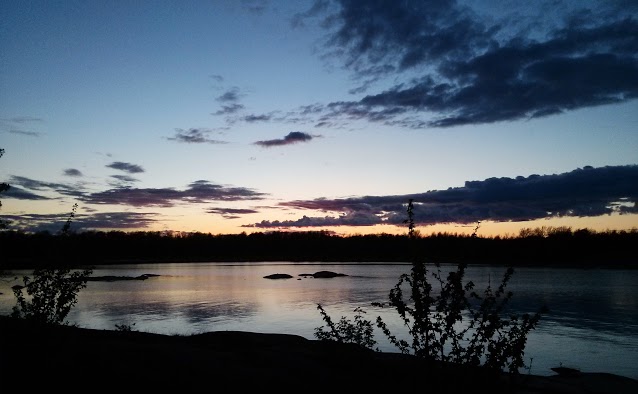Let silence take you to the core of life. – Rumi
What personally attracts me to boreal, tundra, and arctic/antarctic wilderness is an ever-present inviting stillness, and the simplicity of how stillness can give one the space to become aware of any deeper thoughts, habits, patterns, emotions that might be lying beneath the surface of running from A to B, doing things, ticking off to-do list items, getting, thinking, going. Perhaps a valuable aspect of wilderness areas is the possibility of experiencing openness and stillness at the same time. In our well-built cities this is almost by definition impossible to attain – it’s either openness with a lot of hustle and bustle (visual, mental, aural, etc), or then stillness (in an isolated room) but no space/openness.
Aside from the descriptive meaning of the word, that of “lack of movement” or literal stillness, stillness can also mean constancy of movement, the sound of rain which in the irregularity of each raindrop creates a homogenous outpour of rain-sound. Or waves on a lake or sea, how by continuous movement a homogeneity is created which is still in its essence. Beyond superficial weather phenomena, there is a grander stillness in nature, which one is free to experience simply by putting oneself out there. This is stillness of the mountain, which in the face of storms, freezing winters and scorching summers, gale-strength winds or erosion remains the same, unmoved and equanimous. There is a truth about the way things just are, about the ephemerality of existence on one hand, and the eternity and boundlessness of the grander scheme of things, the pattern that connects:
There was something formless and perfect
before the universe was born.
It is serene. Empty.
Solitary. Unchanging.
Infinite. Eternally present.
It is the mother of the universe.
For lack of a better name,
I call it the Tao.Tao Te Ching, Chapter 25
Spending time in such places which feature an inherent stillness, and by opening up to such stillness, we can use these experiences as a metaphor for our own lives. We can use this as a starting point for becoming aware of any inner turmoil in our own minds which like a windmill runs relentlessly from moment to moment. And on the other hand we can tune into and embrace these qualities in nature: non-judgmentality, equanimity, honesty, interdependence, and help bring awareness and compassion to our own thoughts, lives, and relationships.
In a built environment, a place of “things” (buildings, roads, signs, ads, etc) everything around serves a purpose or aim, they intentionally put there (maybe not for you, but for someone). In a natural environment, everything is as it is because of their own accord: there is an emergent rather than an established order, and to find oneself surrounded by beings and existences which are not meant for a reason but are just there can be liberating. It is easier to just be, to let go, to let thoughts and emotions pass by in the same manner clouds pass by a mountain. Not with an attitude of indifference, rather one of equanimity, of an inner balance and peace which is nurtured by the way things are in the wilderness.
When we touch beneath all the busyness of thought, we discover a sweet, healing silence, an inherent peacefulness in each of us, a goodness of the heart, strength, and wholeness that is our birthright.
Jack Kornfield (A Path With Heart, 2008, p.50)
However, this is not meant to be just means for escapism or avoidance – rather than seeing such places as temporary relief places from anything that might be troubling us in city/social life, this time in the wilderness should, similarly to meditation, become a mirror onto ourselves, making patterns, thoughts, behaviours visible, helping us cultivate awareness and kindness to existence, and open up to the possibility of life.

Jungfruskär, Archipelago National Park, Finland (June 2015, Laonikos)
For John Burnside, in solitude in the wilderness there is an imperative to return back to a social life, all the while enriched and changed. It is then one more way of getting in touch with what it means to be human.
At the still point of the turning world. Neither flesh nor fleshless;
Neither from nor towards; at the still point, there the dance is,
But neither arrest nor movement. And do not call it fixity,
Where past and future are gathered. Neither movement from nor towards,
Neither ascent nor decline. Except for the point, the still point,
There would be no dance, and there is only the dance.T.S. Elliot, excerpt from “II” of Four Quartets
Passionate about anything to do with arts and the outdoors, Laonikos writes about his experiences as a guide in Finnish Lapland. He is an avid sauna goer and bakes his own bread.

